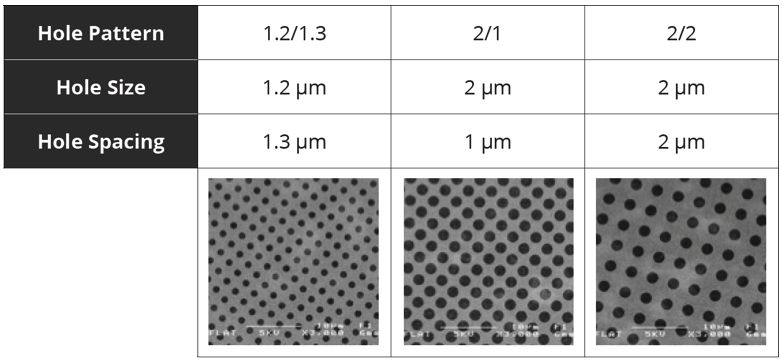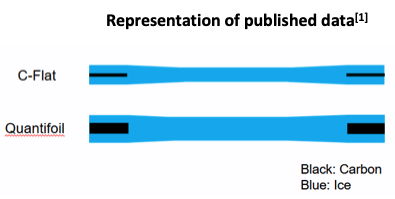Single particle electron cryo-microscopy (cryo-EM) is a powerful technique to determine the structures of protein complexes down to atomic resolution. The sample is applied onto a holey carbon film and is then flash-frozen in liquid ethane.
C-flat™ holey carbon films are superflat sample supports providing flat and even amorphous ice[1]. And: they are in stock for immediate delivery! Learn more below...
C-flat™ Selection Guide
1. Hole size and spacing of the carbon film
High resolution cryo-EM usually requires smaller holes and vice versa. Smaller spacings provide more imageable ice area but larger spacings are stronger.

2. Carbon Thickness
C-flat™ is offered with a choice of 20 nm and 40 nm carbon thickness:
- Standard carbon (20 nm) is most capable of achieving a thin ice layer[1].
- Thick carbon (40 nm) is more durable, and is recommended for novice users, users with large particles, or users who have process conditions that needs the extra durability.

3. Grid mesh
The Cryo-EM grid supports the holey carbon film on top, the higher the number the finer the mesh. The 200 mesh provides more free area but on the other hand less mechanical support for the holey carbon film than e.g. the 400 mesh. All grids are available in copper or gold.

E-Mail Christin for technical inquiries or further information: xtals@jenabioscience.com
Reference:
[1] Cho et al. (2013) Measurement of ice thickness on vitreous ice embedded cryo-EM grids: investigation of optimizing condition for visualizing macromolecules. Journal of Analytical Science and Technology 4:7.




